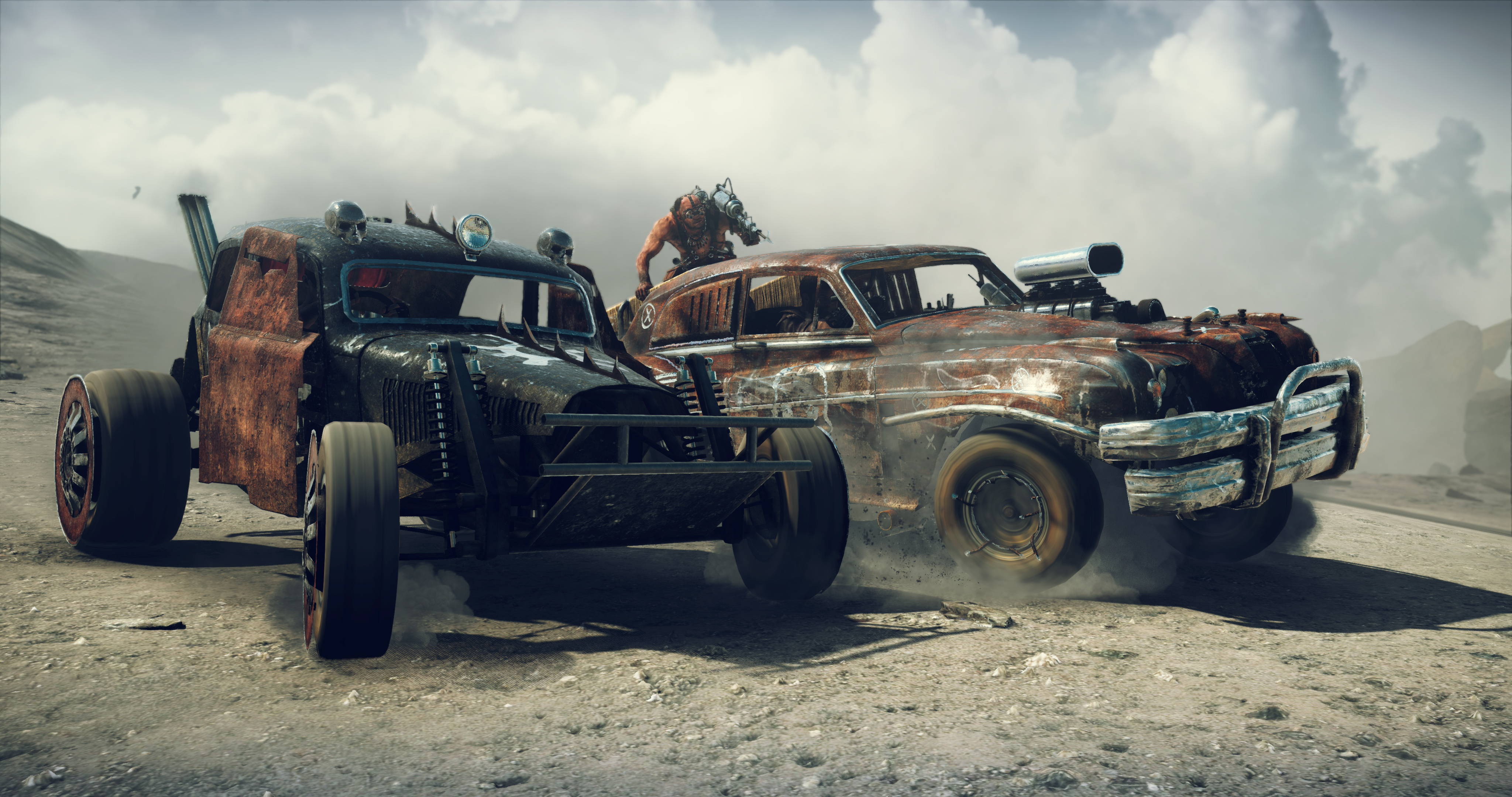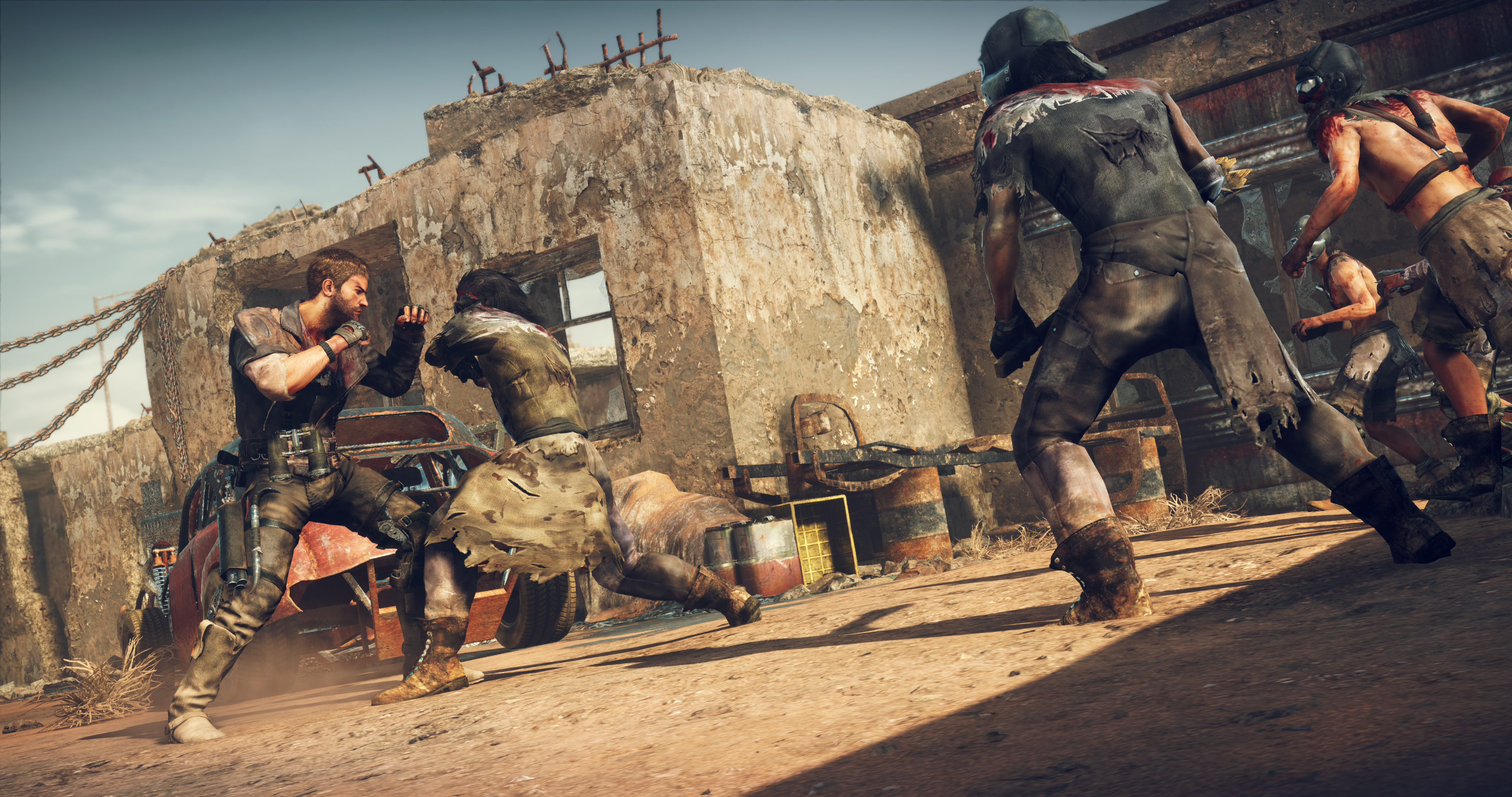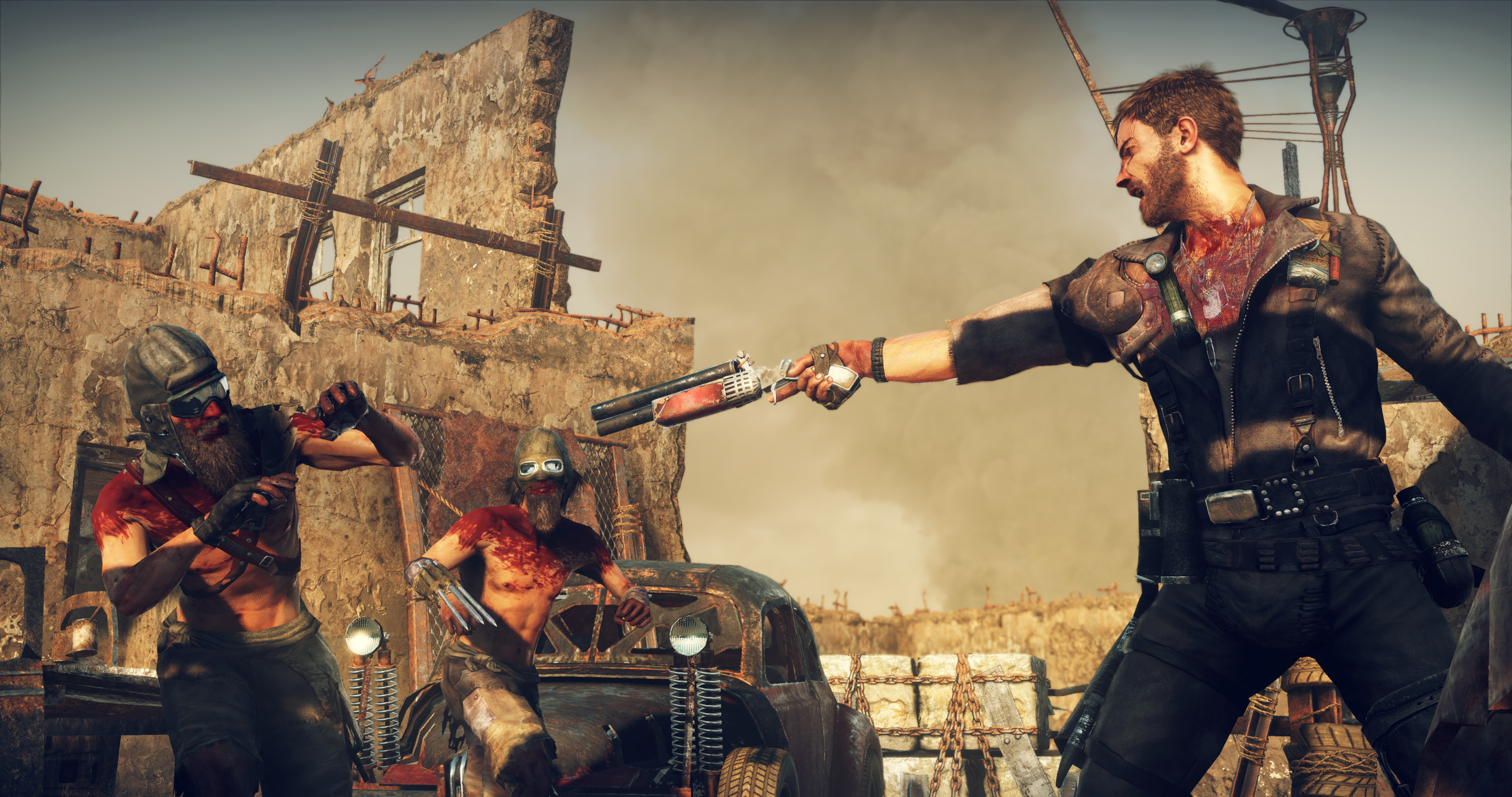Mad Max hands-on: The fast and the Furiosa

Avalanche Studios calls cold, snowdrowned Sweden home, which might make them seem like a strange fit to make a massive, open-world desert game. Then again, if Mad Max wasn’t in Avalanche’s hands, it probably wouldn’t have moments of tether-based physical comedy to lighten what’s otherwise a dour apocalypse.
Minutes into my hands-on with Mad Max, I grab a wasteland raider with a harpoon gun mounted on my car and drag them over the desert. The wastelander’s body bounces over the dunes like a comatose water-skier, then I jam the brakes and reel in the tether, carrying their momentum forward and slingshotting them over the top of my apoco-car until they tumble out of sight.
This tether weapon and the tech that drives it is one piece of overlap between Mad Max and Avalanche Studios’ established sandbox series, Just Cause, but on the whole this is a game with a different spirit. It’s less lighthearted. There’s a greater focus on action game platforming and hand-to-hand combat. Mad Max also has light survival elements—water and food restore HP, but both are scarce. And categorically Mad Max is a game about driving your car into stuff, primarily other welded-together junk jalopies, and then picking up those pieces and upgrading your car so it’s better at driving into other stuff.

Mad Max also isn’t a direct adaptation of the recent, excellent film. Charlize Theron's bald likeness hasn't been licensed, and villains like Immortan Joe won’t hunt you down for stealing their brides, although there are references to locations like Gastown. In fact, Avalanche told me it was practically a demand of theirs to not have to make a true-to-film tie-in.
It’s interesting and at the same time concerning the extent to which Mad Max feels like a set of welded-together elements from popular open-world games. There's Batman’s melee system, with combo chains, takedowns, and visualized button prompts to counter. Convoys roam preset paths, and encountering one feels a bit like stumbling into one of Shadow of Mordor's war bosses. Each region of the map seems to have a “top dog” warlord holed-up in junkyard bases reminiscent of Far Cry’s outposts. It’s a combination of familiar, acclaimed mechanics. But as Avalanche throws the kitchen sink into this literal sandbox, how likely is it that all of these systems will stick their landings? When you borrow Arkham's hand-to-hand combat, even a modest gap in polish between the system you’ve built and the world-class one it’s based on can seem vast because players’ expectations are higher. The Elder Scrolls Online is a potent recent example of how familiarity can work against a game.
The on-foot portion of Mad Max is both more and less substantial than I thought it'd be. I spent 10 or 15 minutes working over a couple of larger outposts, climbing ladders, punching and blocking my way through groups of raiders (some were armored, some had melee weapons that I could borrow) assigned to different sections of the junkyard kingdoms. Along the way, I scoured for scrap, ammo, and survival items. These bases felt a bit barebones, more like a collection of recycled apocalypse assets, but spatially they were at least big enough that traversing them was a fun break from driving flat out across the desert.

Of all these elements, vehicle combat and upgrading seems to get the most attention in Mad Max, which I think is a good decision. It feels a bit like Burnout in the sand—mashing your fender against an enemy vehicle is the surest way to do damage, and time decelerates the moment you deliver a high-damage hit. Onboard weapons act as secondary tools for dismantling raiders. 'Sideburners,' flamethrowers that draw from your fuel tank, belch out the left and right sides of your car. Max can pull out his shotgun to blast raiders clinging to his roof, if you’re willing to spend the ammo. If you stop the car you can drop to the rear compartment to fire a sniper rifle, good for taking out tower guards at a distance.
Keep up to date with the most important stories and the best deals, as picked by the PC Gamer team.
All of these weapons, and a long list of other car components can be individually upgraded. Engine, exhaust, tires, suspension, boost, rims, boarder spikes for deterring jumpers, and a couple of cosmetic upgrades are purchasable with enough scrap currency. I liked that there didn’t seem to be a single path for car upgrading—you could spec out a nimble, fragile ride for Max or something much tankier and top-speed focused. To encourage players toward different builds, there are a set of pre-made specialty builds called “archangels” that Avalanche puts in a separate menu, where it shows you which parts you need to grab to complete the build.

I was a little disappointed that cars don’t crumple or take damage in a granular way. With the exception of a boss vehicle that I tore armor plates off of with my harpoon, cars seem to simply be four-wheeled life bars, and even over half an hour or so, the enemies I encountered felt simple to dispatch through brute force. I hope there are enemies that require some unique tactics; with the exception of cliffs and hills, the landscape I drove over was completely open, making the same maneuvers successful in almost all situations. Still, the animations and physics driving all this are impressive, and it felt great to plow through an idling raider vehicle and knock it dead it in a single pass.
Warner Bros. certainly deserves credit for how they’ve handled licensed games like the Arkham series in recent years, and from what I’ve played they’re giving Avalanche a lot of freedom, which is encouraging. With a few months left before its September release, what’s unclear is whether Mad Max is trying to be too many things at once: Burnout in the desert with fully-fleshed out customization; an open-world territory-conqueror in the style of Ubisoft; a third-person beat-’em-up with combos and counters. It’s hard enough to do one of these things well in a sandbox setting.

Evan's a hardcore FPS enthusiast who joined PC Gamer in 2008. After an era spent publishing reviews, news, and cover features, he now oversees editorial operations for PC Gamer worldwide, including setting policy, training, and editing stories written by the wider team. His most-played FPSes are CS:GO, Team Fortress 2, Team Fortress Classic, Rainbow Six Siege, and Arma 2. His first multiplayer FPS was Quake 2, played on serial LAN in his uncle's basement, the ideal conditions for instilling a lifelong fondness for fragging. Evan also leads production of the PC Gaming Show, the annual E3 showcase event dedicated to PC gaming.

